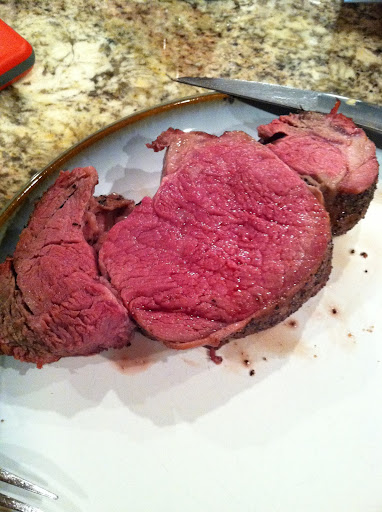thirtydaZe
Full Fledged Farker
Last night i did a 2nd attempt at a prime rib roast, small, boneless.
My first one was 1.85#, the one last night was 2.02#.
This time i went to 137* IT, in hopes to have a more "medium" result.
Anyhow, i cooked both fast, around 275*-300*, using oak splits exclusively as fuel.
Here is the one from new years, done IT 120*

Here is the one from last night, done IT 137*

Are they looking a little rare, does the smoke cause a little of this effect, or is my next plan to cook these until 145*?
My first one was 1.85#, the one last night was 2.02#.
This time i went to 137* IT, in hopes to have a more "medium" result.
Anyhow, i cooked both fast, around 275*-300*, using oak splits exclusively as fuel.
Here is the one from new years, done IT 120*
Here is the one from last night, done IT 137*
Are they looking a little rare, does the smoke cause a little of this effect, or is my next plan to cook these until 145*?




